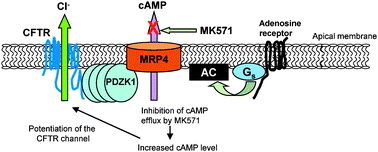CFTR chloride channel in the apical compartments: spatiotemporal coupling to its interacting partners
Abstract
The

* Corresponding authors
a Department of Biochemistry and Molecular Biology, Wayne State University School of Medicine, 540 E. Canfield Avenue, 5312 Scott Hall, Detroit, Michigan 48201, USA
b
Department of Physiology, University of Tennessee Health Science Center, 420 Nash, 894 Union Avenue, Memphis, Tennessee 38163, USA
E-mail:
anaren@uthsc.edu
Fax: +1 901-448-7126
Tel: +1 901-448-3137
The

 Please wait while we load your content...
Something went wrong. Try again?
Please wait while we load your content...
Something went wrong. Try again?
 Fetching data from CrossRef.
Fetching data from CrossRef.
This may take some time to load.
Loading related content
